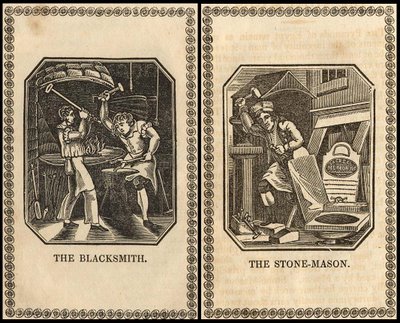
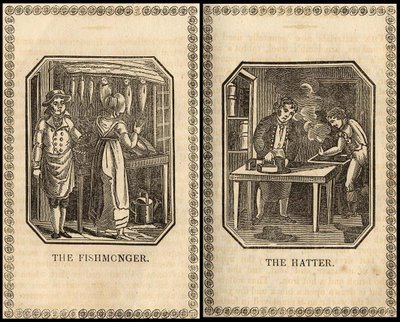
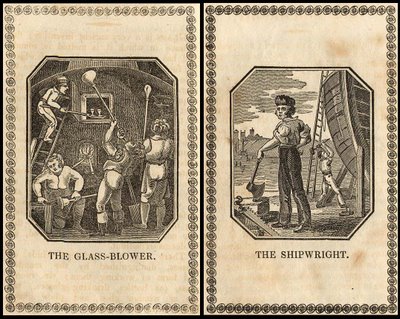
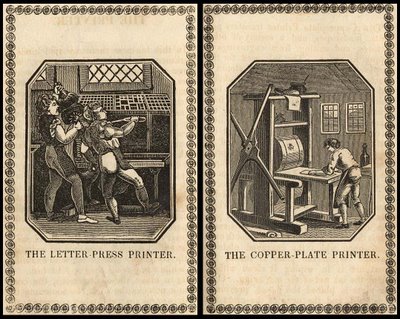
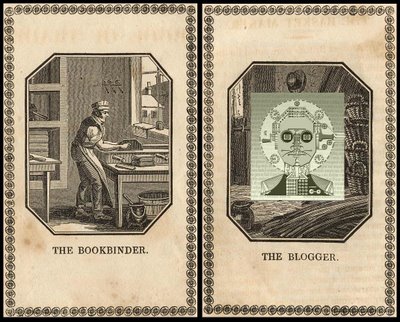

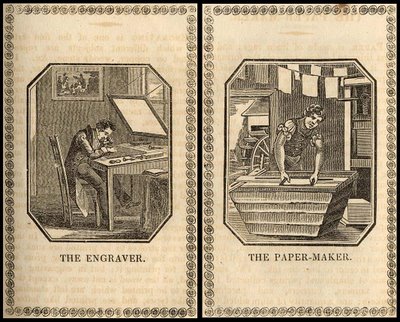

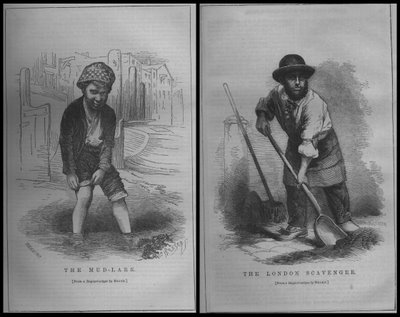
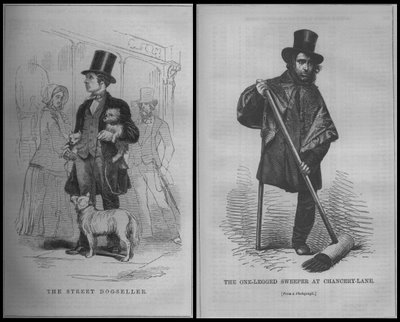
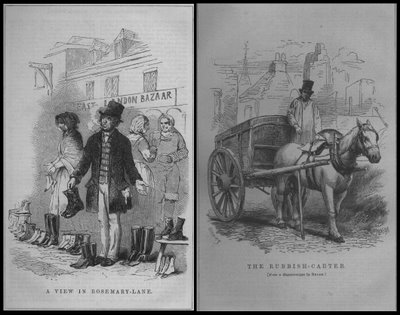
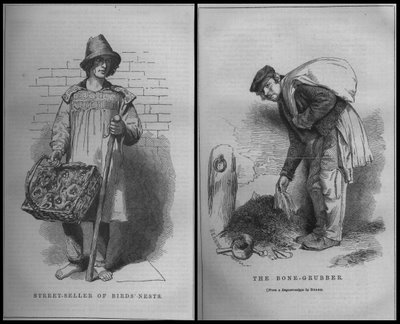
The top section of images come from 'The book of trades; or, Familiar descriptions of the most useful trades, manufactures, and arts practised in England : and the manner in which the workmen perform their various employments. London: A. K. Newman, undated, inscribed 1829' at the Digital Library for the Decorative Arts and Material Culture from the University of Wisconsin. {click on 'Display Gallery View'} [And apologies to normanpublishing]
The rest of the images are from 'London Labour and the London Poor' [Volume 2] 1861 by Henry Mayhew, among the 'The Bolles Collection on the History of London' at Tufts Digital Library. [Mayhew: CISS/Wikipedia] -- This is a truly fascinating (not to mention patronising) and detailed survey of the wretched vagabonds and street hustlers of Victorian London. It includes extensive interviews of subjects and methodical profiling of the seediest 'occupations'. It is the Dickens of non-fiction.
"These men, for by far the great majority are men, may be divided, according to the nature of their occupations, into three classes:--
1. The bone-grubbers and rag-gatherers, who are, indeed, the same individuals, the pure-finders, and the cigar-end and old wood collectors.
2. The dredgermen, the mud-larks, and the sewer-hunters.
3. The dustmen and nightmen, the sweeps and the scavengers.
The first class go abroad daily to find in the streets, and carry away with them such things as bones, rags, “pure” (or dogs’ dung), which no one appropriates. These they sell, and on that sale support a wretched life.
The second class of people are also as strictly finders; but their industry, or rather their labour, is confined to the river, or to that subterranean city of sewerage unto which the Thames supplies the great outlets. These persons may not be immediately connected with the streets of London, but their pursuits are carried on in the open air (if the sewer-air may be so included), and are all, at any rate, outof- door avocations.
The third class is distinct from either of these, as the labourers comprised in it are not finders, but collectors or removers of the dirt and filth of our streets and houses, and of the soot of our chimneys."
- The History of Work Information Systems have 746 images "on the world of work in the past, taken from various books and collections." The images are not very big, however.
- I spent so much time dithering, reading about the convoluted intricacies of Crossing Sweeps that I didn't even manage to have an entry ready for posting on the 1st birthday of this here lowly establishment. I may have to have a week off as penance.



















10 comments :
Wow, there were Bloggers in Europe in 1829?
did you replace "the basketmaker" with "the blogger"?
happy birthday! (nice pinata. :)
gl. from scarlet star studios
As someone much higher in the foodchain than I might say, "Heh!"
And I second the happy birthday wishes!
Cheers!
Bloggers or basketmakers...artisans by any other name. *cough*
I would be much happier however if I hadn't somehow borked the template during or after posting this entry. It's driving me a bit nuts and I'm tempted to start another blog and copy the template across (for 'artisan', read: 'woefully uneducated abuser of technology')
See, we do pay attention!
Happy anniversary from Articles & Texticles!
A very happy bird's nest and bones blog-birthday, and I hope it is not the least bit disagreeable, and that your template behaves. What with mud-larks and scavengers and sweepers, you might be wading through "Our Mutual Friend."
you are too funny :^)
happy birthday!
Happy birthday to the first classe blogger! from the 3 classe sweeps family
;-D
Patricia
THE BLOGGER!! HAHAHAHA
I came across this today (Jan Luyken), so I thought I'd stick it in here.
Post a Comment
Comments are all moderated so don't waste your time spamming: they will never show up.
If you include ANY links that aren't pertinent to the blog post or discussion they will be deleted and a rash will break out in your underwear.
Also: please play the ball and not the person.
Note: only a member of this blog may post a comment.